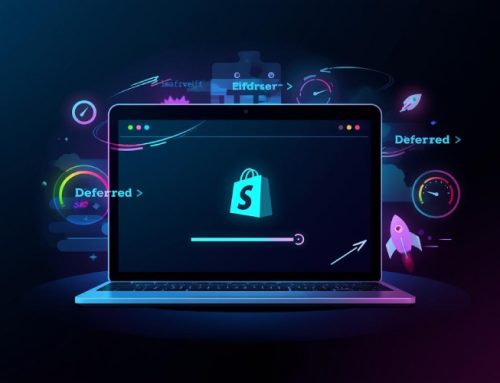Shopify Speed Optimization Step by Step Guide
Before you start your step-by-step optimization you should be familiar with certain features, tools, and matrixes as stated below-
- Tools that can be used for measuring optimization
- What is core web vitals
Below are the steps and supporting topics for optimizing a shopify website step by step-
- Choose a lightweight theme
- Eliminate Render-Blocking Resources
- Remove unused an app
- These are some of the opportunities for optimizing images for the shopify site’s speed:
- Optimize images
- Defer offscreen Images: Lazy loading Images
- Image Formats
- Properly Size Images: Responsive Images
- Using
<picture>Tag - Compress Images
- Image Elements Do not have explicit Width and Height
- Optimize images
- Ensure Text Remains Visible During Webfont Load Shopify
We are explaining step-by-step optimization you should be familiar with certain features, tools, and matrixes as stated below –
1. Tools that can be used for Measuring Optimization
There are several online tools that help in finding opportunities on your site for speed optimization.
- Google Pagespeed insights (Recommended)
- GTMetrix
- Google Lighthouse
2. What is Core Web Vitals?
Web vitals measure the speed, responsiveness, and visual stability of a website.
Google has defined the following as Core Web Vitals:
- Largest Contentful Paint(LCP)
- Cumulative layout shifting
- First input delay
How to Improve Core Web Vitals in Shopify?
The following are some points that have been improved in core web vitals.
- Optimize your images
- Remove the unused applications and their code.
- Remove Unused css
- Reduce third-party payload
- Eliminate render-blocking
Read this Blog and Find:- Improve Core Web Vitals in Shopify
Below are the steps and supporting topics for optimizing a shopify website step by step –
1. Choose a Lightweight Theme
Shopify themes are built with liquid, HTML, CSS, and javascript. From a performance perspective, a fast Shopify theme can immediately increase the performance of your website and A light theme will ensure your website runs as fast as possible.
Choose a theme that is optimized for speed and performance on Shopify.
2. Eliminate Render-Blocking Resources
Render-blocking resources block the loading of web pages, usually CSS and Javascript. The browser needs a lot of time(specially mobile browsers ) to process these resources, but they may not be necessary for the user experience right away as they are not used in the above fold page display.
With async, the file gets downloaded asynchronously and then executed as soon as it’s downloaded. With defer, the file gets downloaded asynchronously but executed only when the document parsing is completed. With defer, scripts will execute in the same order as they are called.
Read this Blog and Find:- Eliminate Render-Blocking Resources
3. Remove Unused an App
There are a lot of apps and third-party scripts used by Shopify stores. in the end, resulting in a large number of requests. By adding apps or scripts to your website, you are increasing the number of requests. These scripts also need to be considered according to their size.
When removing unnecessary apps, you should also how to Remove an App in Shopify and remove Shopify app files from your theme. Installing Shopify apps automatically injects the file into your theme. Installing Shopify apps automatically injects the file into your theme. Third-party code can significantly impact load performance.
Read this Blog and Find- How to Remove an App in Shopify
4. These are some of the opportunities for optimizing images for the shopify site’s speed
A. Optimize Images
When you analyze the factors slowing down your website or lowering the performance of your store, images are among one them. Since the quality of screens has improved, the quality of images to be displayed in the store also needs to be improved. However, having a high-quality image also means having a larger file size. These large file-size images can significantly lower the performance of your store.
-
Defer offscreen Images: Lazy loading Images
Lazy loading is a performance optimization technique that loads images as the user scrolls down the page, instead of during the initial page load.
Read this Blog and Find- Defer offscreen Images
-
Image Formats
In image format, PNG is of higher quality whereas JPEG is smaller. If any image in your HTML on Shopify should be a JPEG when possible (this will include product images).images that live in your CSS code should be PNG.
Following are the image formats most used in Shopify
- 1. WebP Image Format
- 2. JPEG Image Format
- 3. PNG Image Format
Read this Blog and Find:- Shopify-supported image formats
-
Properly Size Images: Responsive Images
Compares the size of the rendered image against the size of the actual image. The rendered size also accounts for the device pixel ratio. If the rendered size is at least 4KiB smaller than the actual size.
Following are some points related to the opportunity to “Properly sized images”
- 1. How to handle this opportunity
- 2. How to make responsive images
- 3. Serve proper size for images
- 4. Proper width and height
Read this Blog and Find:- Properly Size Images
-
Using
<picture>Tag
The most common use of the element will be for art direction in responsive designs. instead of having one image that is scaled up or down based on the viewport, multiple images can be designed to fill the browser viewport.
Read this Blog and Find:- Picture tag in shopify
-
Compress Images
When images are compressed, their file size is reduced without compromising quality, which improves your store’s loading time.
Read this Blog and Find:- Compress images in shopify
-
Image Elements Do not have explicit Width and Height
The <img> width attribute is used to set the width of the image in pixels. Applying a width and height attribute the browser can now calculate the aspect ratio before it renders the image element and can reserve enough space for the image once it downloads.
Read this Blog and Find:- Image Elements Do not have explicit Width and Height
5. Ensure Text Remains Visible During Webfont Load in Shopify
What can you do to display text correctly while web fonts are loading on your Shopify website, and to fix the page speed insight opportunity?
- What is @font-face
- Google Fonts
Read this Blog and Find:- Webfont load
You should know that improving your Shopify store’s page speed and performance takes time, but the changes have an almost immediate effect. It may seem effortless at first but having the right knowledge and resources will help you.





